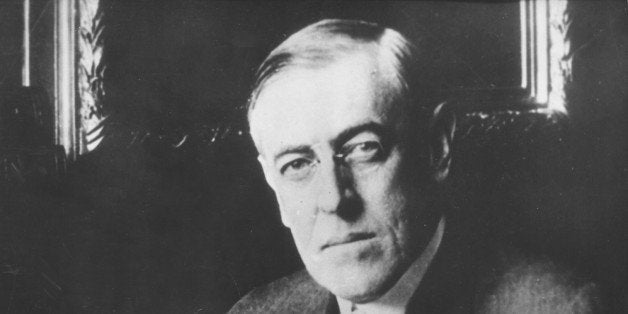
A campaign to honor the struggle to end slavery in the United States is an excellent social studies project to engage students as active citizens responding to racism and in shaping the future the United States.
Students at Princeton University in New Jersey are engaged in a major battle over renaming its Woodrow Wilson School of Public and International Affairs and the Wilson College residential complex. While President of the United States in the early twentieth century, Wilson, who admired the Ku Klux Klan, resegregated the United States postal service and other civil service positions.
At Harvard University's Law School students are demanding that the school's "official seal" be dropped because it contains the family crest of the largest slaveholder in colonial Massachusetts. Isaac Royall Jr., whose father was a Caribbean slave trader, donated land to the university in 1817 to establish the law school.
In New York City Mayor Bill de Blasio called on Yale University to rename the residential college where his son lives. The college is named after John C. Calhoun, a Yale alumni, who was a Southern slaveholder and a chief advocate for slavery. De Blasio also said he is willing to listen to "concerns" about the New York City locations named after slaveholders and slave traders.
Renaming New York City locations will be a big task. Not only does the city have the George Washington Bridge, Washington Heights and Washington Square Park, Madison Square Garden, Madison Avenue, Astor Place, Delancey Street, and Chambers Street, but it also have a number of high schools and high school campuses named after slaveholders and slave traders. They include Washington and Stuyvesant in Manhattan, Madison and Jefferson in Brooklyn, Morris, Monroe, and Walton in the Bronx, and Francis Lewis in Queens.
There are streets named after Washington, Jefferson, Monroe, and Madison in Brooklyn and a major thoroughfare named after Francis Lewis in Queens as well as parks and playgrounds named after slaveholders including Schenck Playground in Brooklyn and Van Cortlandt Park in the Bronx. Citi Field in Queens and the Barclay Center in Brooklyn are both named after banks that profited from the trans-Atlantic slave trade and the sale of slave produced commodities.
The list of slaveholders, slave traders, and racists honored in the city of New York is expanded exponentially when you add statues scattered around the city. A statue in Tompkins Square Park depicts Samuel S. Cox, one of the leading opponents of the 13th amendment that ended slavery in the United States and statutes in Central Park honor nativist and racist Samuel Morse and Dr. James Marion Sims who conducted medical experiments on enslaved African women during the pre-Civil War era.
Liverpool in England renamed every street named after a slave trader except Penny Lane because of its connections with the Beatles. The street is named for wealthy slave trader James Penny.
Rather than renaming the entire city, I have a different proposal. New York should celebrate the struggle to end slavery and build monuments and name parks and schools to recognize people and events that helped create a more just society. I have two suggestions and a commission could certainly name many more.
Among historians there is significant debate over the significance of the Emancipation Proclamation issued by Abraham Lincoln on January 1, 1863 and its actual and immediate impact on slavery in the United States. However for the majority of abolitionists and free and freed Black people it had tremendous symbolic importance and was cause for a "grand emancipation jubilee." Major celebrations were held in both the cities of New York and Brooklyn.
On the night of December 31, 1862 "In anticipation of the Emancipation Proclamation which the President is expected to issue today, the colored people of this City held a grand jubilee last night at Shiloh Presbyterian Church, corner of Prince and Marion streets." The church and Marion Street are both long gone and the site, now a shopping district in SOHO near the intersection of Prince between Lafayette and Mulberry, is unmarked. There is a public library near by that could be renamed and would be an ideal place for a plaque recognizing the jubilee celebration and Reverend Henry Highland Garnet, pastor of Shiloh Church, and a leading abolitionist.
The same evening, the Black population of Brooklyn, which at the time was an independent city across the East River from New York City, gathered for a three-day celebration of freedom in a plaza outside the Bridge Street AME Church. All that remains of this structure is the front of the church that is now part of a student center for the Polytechnic campus of New York University. The plaza, however, is still there and is part of the Metro Tech complex. It would be great to name the plaza "Grand Emancipation Jubilee Plaza" and make it the site of an annual commemoration. Maybe Metro Tech or NYU could even donate space for a permanent public exhibit.
